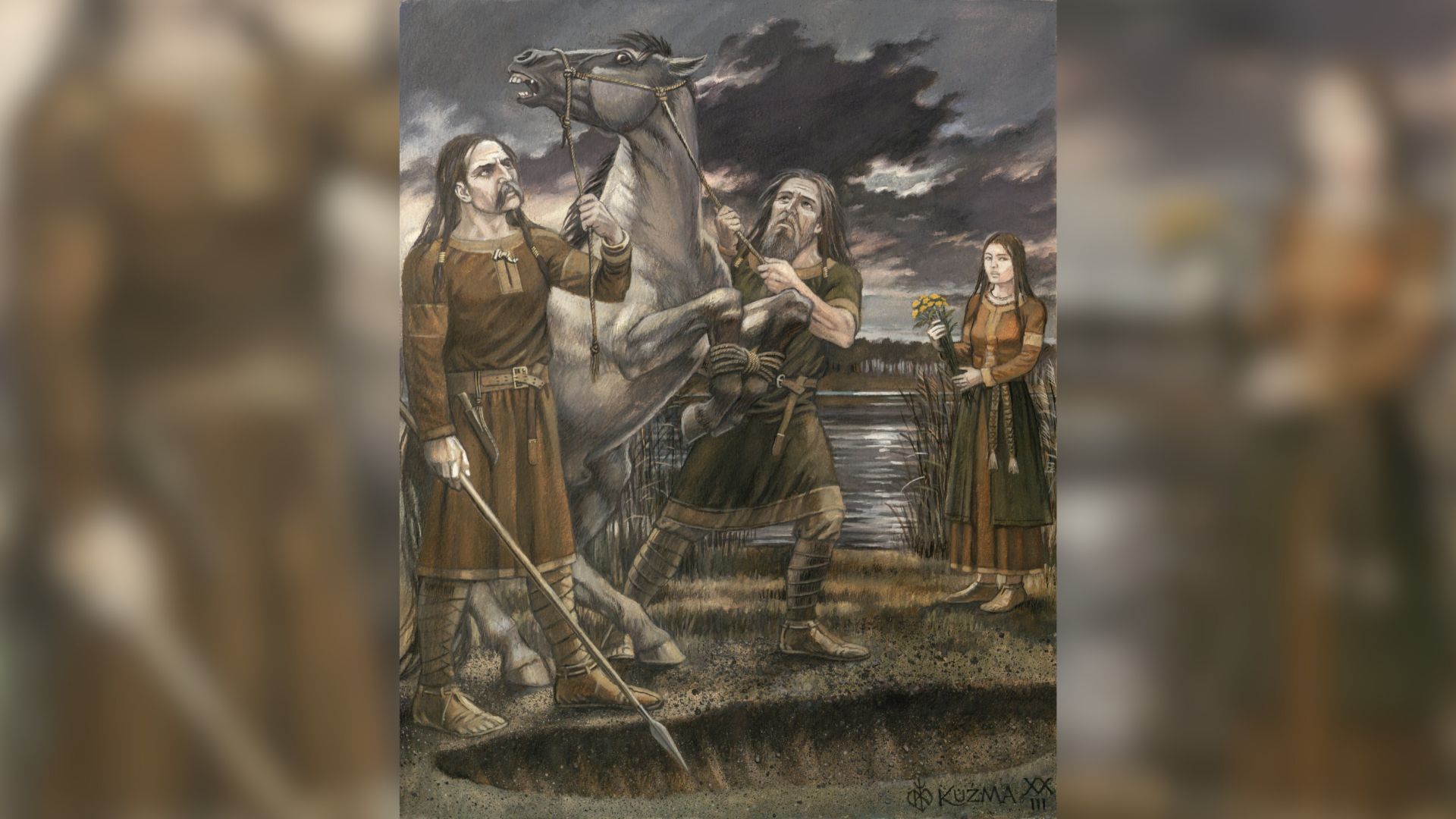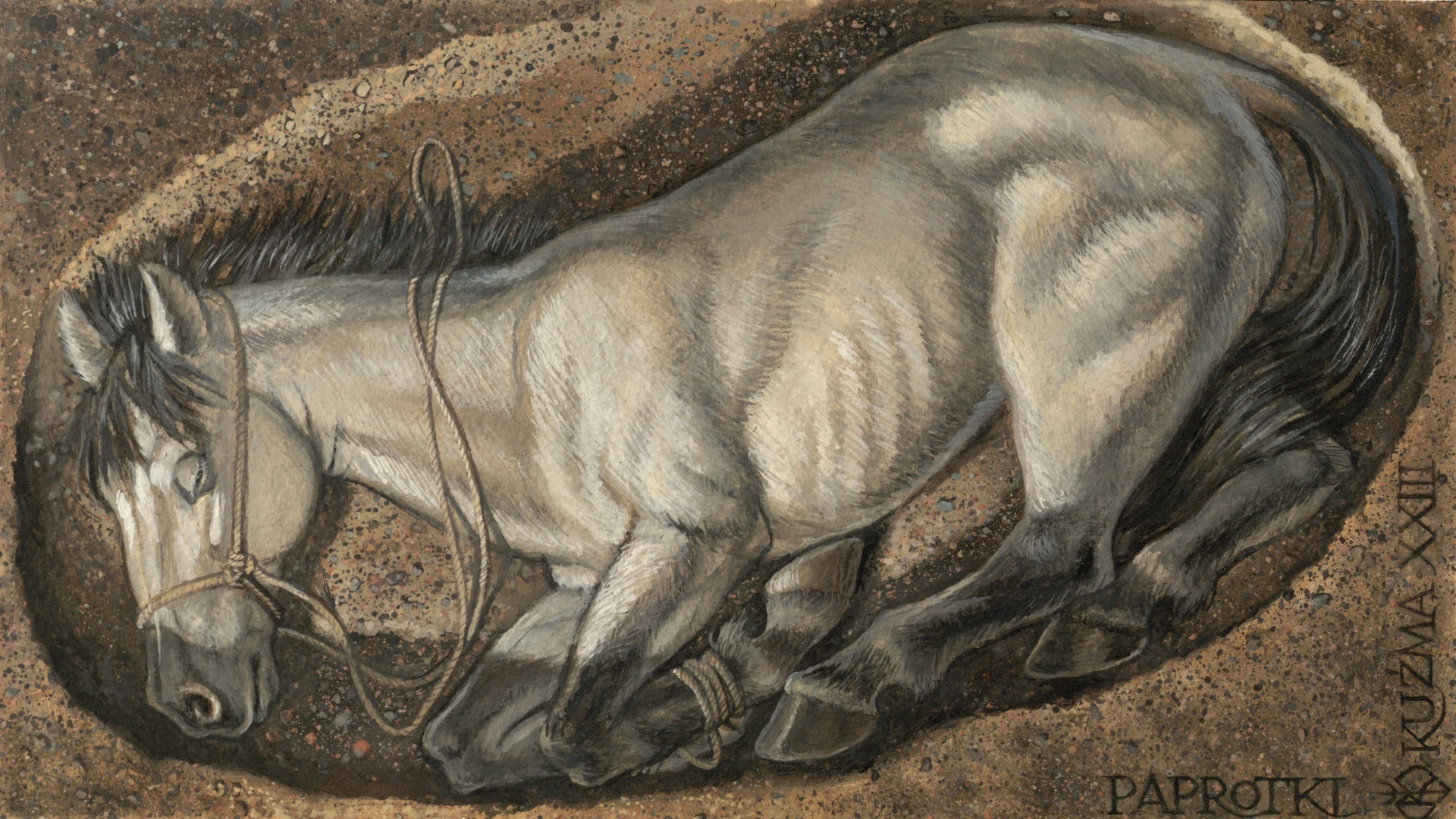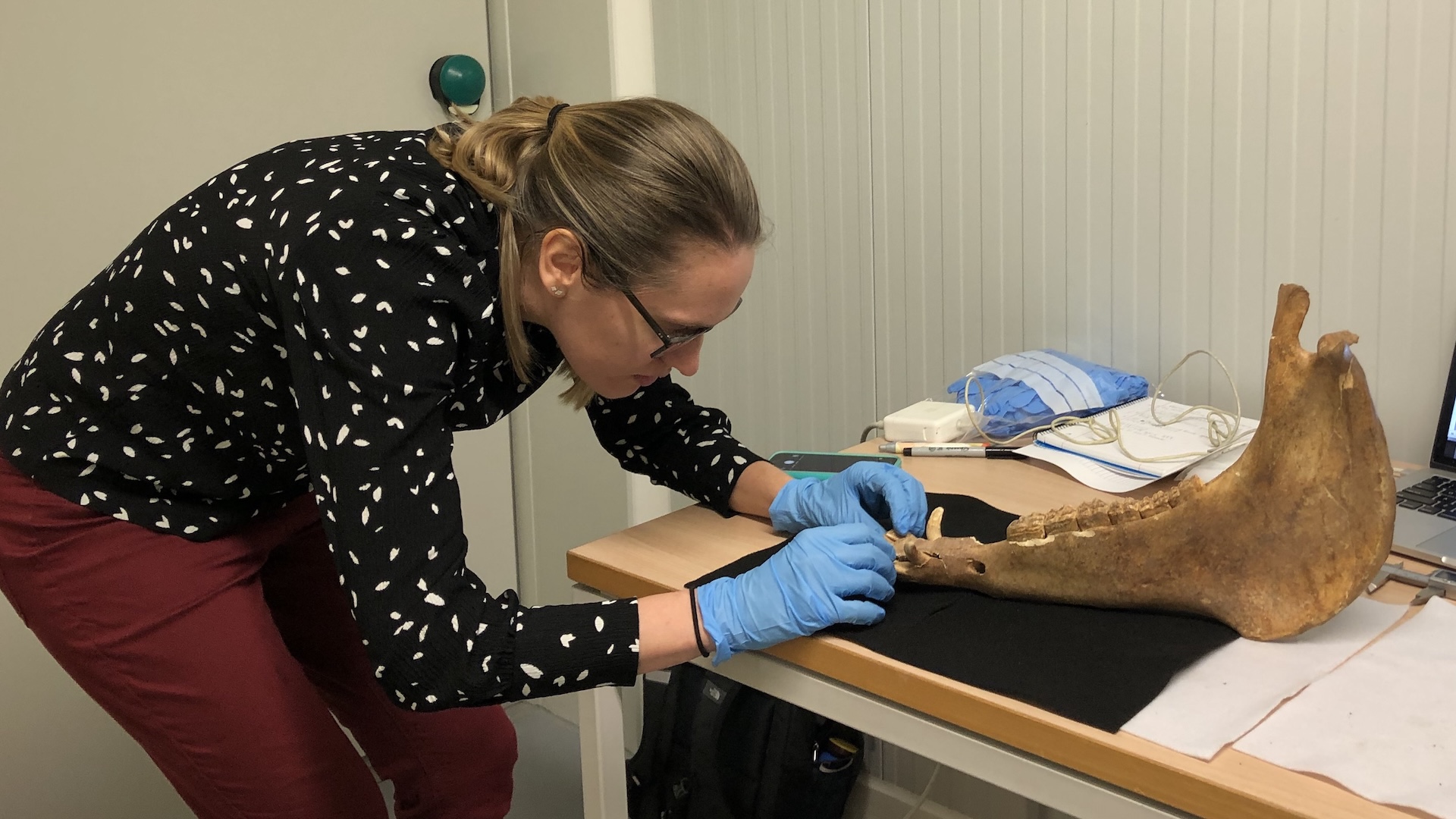
Around 1,000 years ago, pagans living near the Baltic Sea imported horses from their newly Christian northern neighbors and then subjected the animals to gruesome public sacrifice, a new study finds.
Horses were an important component of Balt culture between the first and 13th centuries, evidence shows; numerous ancient equestrian artifacts have been recovered, and travelers have reported that elite Balts drank fermented mare's milk. Because the Balts were not literate prior to their conversion to Christianity, however, most information about their lives, including their pagan religion, comes from archaeological investigation.
In a new study published May 17 in the journal Science Advances, researchers detailed their biomolecular analysis of 80 sacrificed horses from nine archaeological sites in the eastern Baltic region — modern-day Poland, Lithuania and the Russian province of Kaliningrad sandwiched between them — and determined that both male and female horses were chosen for sacrifice and that some horses were imported from quite a distance.
A previous assumption within Baltic archaeology, according to the study, was that stallions were specifically selected for public sacrifice and that this ritual — which often involved decapitation, flaying, quartering the horses or burying them alive — was enacted at the funerals of elite male warriors in Balt culture. To test this, the team analyzed the DNA of the horses and found that roughly 66% were stallions and 34% were mares.
"Our results suggest that the Balts were not exclusively selecting male horses for this ritual, as previously thought," lead author Katherine French, a zooarchaeologist formerly at Cardiff University in the U.K. and now based at Washington State University, told Live Science in an email.
Related: 2,700-year-old leather saddle found in woman's tomb in China is oldest on record

Because horses were common in the Balts' territory, researchers did not previously question whether the animals were sourced locally or from somewhere else. But the new study did a strontium isotope analysis of the horses' tooth enamel to identify the origin of the horses — and found that three were not born locally. The strontium present in tooth crowns comes from the animals' early diet; by measuring the ratio of two variants of strontium in one tooth or between teeth that grew at different times, researchers can match where the animal grew up or see where it moved when it was growing up.
"Results confirm that there is no possibility that the horses originated in the territory of the Baltic tribes and that the region of the highest likelihood for these horses is the Fennoscandian Peninsula, specifically east-central Sweden or southern Finland," the researchers wrote.
All three horses were carbon-dated to about the 11th to 13th centuries, a time when trade networks across the Baltic Sea, particularly with Sweden, were well established. It was also a period when there was still pagan resistance within the kingdom of Sweden, which officially converted to Christianity in 1164.

The fact that one nonlocal horse in Kaliningrad was buried with a Scandinavian-influenced artifact — a weight, possibly involved in trading — may suggest that its Balt owner was a pagan trader, the researchers wrote in the study. But it is also possible, they noted, that the imported horses arrived with their Scandinavian owners, who were buried in the Baltic style.
"In either case," the researchers wrote, "our results prove that horses were crossing the Baltic Sea on ships, a level of mobility not previously recognized archaeologically."
Flint Dibble, a zooarchaeologist at Cardiff University in the U.K. who was not involved in the study, told Live Science in an email that the new research is both innovative and impactful, and demonstrates how scientific methods can be applied to study ancient animal populations.
"The impressive sample size — 80 individual horses — reveals the importance of applying these methods to a significant, localized dataset in order to tease out relevant archaeological patterns," Dibble said, and "the long distance trade in horses in Northern Europe is now a topic that needs additional investigation."
French plans to address this topic further with new research. "I'm currently working on a separate project looking at contemporary ship technology to determine how — and how many — horses could have been transported on Viking Age cargo ships."







